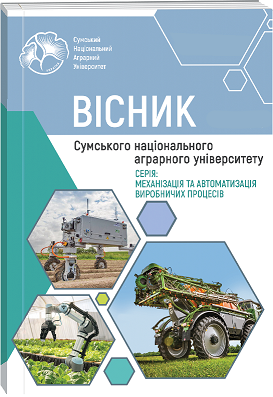COMPARISON OF CHARACTERISTICS OF THE COUNTER-ROTOR STAGE WITH AVAILABLE CNA-180 LINE PUMPS
Abstract
Counter-rotor systems, based on the use of two rotors that rotate in opposite directions, are of increasing interest in industrial sectors due to their high efficiency and ability to reduce vibration loads. This makes them extremely attractive to many sectors of the economy, including aviation, shipbuilding, automotive and energy, where reliability and energy efficiency play a key role. In the rapidly developing world of modern technology, the counter-rotor effect offers unique opportunities to optimize the operation of equipment that meets the growing demands for quality and productivity. One of the main advantages of the counter-rotor technology is the significant reduction of vibrations that occur during the operation of the equipment. A balanced system with two rotors rotating in opposite directions helps to compensate for dynamic loads, reducing the risk of damage and extending the life of the systems. In addition, counter-rotor systems allow to increase the stability and controllability of mechanisms, which is especially important in such industries, where any deviation can lead to serious consequences. Such technology also contributes to an increase in overall productivity, which is important in the conditions of modern energy-saving standards. In the pump industry, counter-rotor technologies open new horizons for the development of compact and at the same time high-performance pump systems. Thanks to two rotor elements rotating in different directions, it is possible to achieve more efficient movement of liquid, as well as to reduce energy losses. This makes it possible to reduce the overall dimensions of the equipment without losing its power and reliability. With this in mind, the article pays special attention to the comparison of counter-rotor pump systems with traditional centrifugal pumps of the CNA type, which are widely used in various fields. The authors of the article provide data on pressure characteristics and energy efficiency, which demonstrate a significant advantage of counter-rotor systems in specific operating conditions. The experimental part of the article presents the results of testing counter-rotor stages with lead-off devices under different operating conditions. These results confirm that this technology not only increases the efficiency of pumps, but also allows efficient use of energy, which is especially important in modern realities. In addition, the article discusses the prospects for the development of counter-rotor systems, their possible implementation in various industries and further research in this direction. Thus, counter-rotor systems represent a promising direction in the development of modern industrial equipment, capable of providing good productivity and energy efficiency while reducing vibrations and loads. Continuing research in this area can lead to the creation of new solutions that will contribute to the further improvement of industrial processes and equipment used in various industries.
References
2. Kondus, V., & Kotenko, A. (2017). Investigation of the impact of the geometric dimensions of the impeller on the torque flow pump characteristics. Eastern-European Journal of Enterprise Technologies, 4(1 (88)), 25–31. doi:10.15587/1729-4061.2017.107112
3. Kondus, V., Kalinichenko, P., & Gusak, O. (2018). A method of designing of torque-flow pump impeller with curvilinear
blade profile. Eastern-European Journal of Enterprise Technologies, 3(8 (93)), 29–35. doi:10.15587/1729-4061.2018.131159
4. Kondus, V., Pavlenko, I., Kulikov, O., & Liaposhchenko, O. (2023). Development of a high-rotational submersible pump for water supply. Water, 15(20), 3609. doi:10.3390/w15203609
5. Kondus, V., Pavlenko, I., Piteľ, J., Kulikov, O., Rybalchenko, V., Ivanov, V., & Ciszak, O. (2024). Improvement of the sewage system for the nuclear power plant WWER-1000 reactor. У Advances in manufacturing IV (с. 279–296). Cham: Springer Nature Switzerland. doi:10.1007/978-3-031-56463-5_21
6. Kulikov, A. A., Ratushnyi, A. V., Kovaliov, I. A., Mandryka, A. S., & Ignatiev, A. S. (2021). Numerical study of the centrifugal contra rotating blade system. Journal of Physics: Conference Series, 1741, 012008. doi:10.1088/1742-6596/1741/1/012008
7. Kulikov, O., Ratushnyi, О., Moloshnyi, O., Ivchenko, O., & Pavlenko, I. (2022). Impact of the closed, semi-opened, and combined contra-rotating stages on volume loss characteristics. Journal of Engineering Sciences, 9(1), D6—D13. doi:10.21272/jes.2022.9(1).d2
8. Pavlenko, I., Ciszak, O., Kondus, V., Ratushnyi, O., Ivchenko, O., Kolisnichenko, E., & Ivanov, V. (2023). An increase in the energy efficiency of a new design of pumps for nuclear power plants. Energies, 16(6), 2929. doi:10.3390/en16062929
9. Pavlenko, I., Kulikov, O., Ratushnyi, O., Ivanov, V., Piteľ, J., & Kondus, V. (2023). Effect of impeller trimming on the energy efficiency of the counter-rotating pumping stage. Applied Sciences, 13(2), 761. doi:10.3390/app13020761
10. Rzhebaeva N.K., Rzhebaev E.E. (2009). Rozrakhunok ta konstruiuvannia vidtsentrovykh nasosiv. [Calculation and design of centrifugal pumps: a textbook]. Sumy State University, Sumy (in Ukrainian).

 ISSN
ISSN  ISSN
ISSN 


